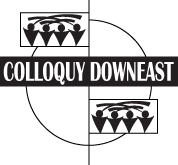Reading Materials
Because terrorism incidents are happening as we put this colloquy together, it’s clear that it is a rapidly changing and developing subject. To that end, I’m prescribing several articles, rather than books, for this reading list. You will notice that much of the material comes from Wikipedia. I’ve found that Wikipedia is pretty up to date on world news, and that includes acts of terrorism. (I’ve also found that Wikipedia has link after link within the main text that will take you down countless tributaries; not to mention the source list at the end of each article.) As a primer, I would suggest reading Wikipedia’s overall tract on terrorism (https://en.wikipedia.org/wiki/Terrorism)
Session One. Paris attacks (https://en.wikipedia.org/wiki/November_2015_Paris_attacks ; San Bernardino mass murders ttps://en.wikipedia.org/wiki/2015_San_Bernardino_attack ; Brussels attacks https://en.wikipedia.org/wiki/2016_Brussels_bombings
Session Two. A good history of U.S. domestic terrorism can be found at https://en.wikipedia.org/wiki/Domestic_terrorism_in_the_United_States ; a state-by-state list of radical groups is at http://www.darkgovernment.com/news/list-of-u-s-militia-groups/ (interesting that there’s nothing in there for Maine.) Also, Thomas Mallon’s Jan. 11, 2016, New Yorker piece on “the John Birch Society and the rise of the radical right.” http://www.newyorker.com/magazine/2016/01/11/a-view-from-the-fringe
Session Three. The U.S. State Department list of terrorist organizations. For some, this could be open to interpretation and debate. https://en.wikipedia.org/wiki/United_States_State_Department_list_of_Foreign_Terrorist_Organizations ; a piece in Business Insider that looks at ISIS’s mastery of recruiting and its use of social media: http://www.businessinsider.com/isis-is-revolutionizing-international-terrorism-2015-5
Session Four. Detecting terrorists – the most difficult part of the exercise. U.S. terrorism experts say the Lone Wolf is the one that is hardest to catch. One organization that studies this aspect in depth is the Southern Poverty Law Center, which publishes the “Intelligence Report” twice a year. In February of 2015, the center published the “Lone Wolf Report,” a detailed look at solitary terrorists and how difficult it is to catch them before they act. (https://www.splcenter.org/20150212/lone-wolf-report ); see also Peter Bergen’s piece “Can We Stop Homegrown Terrorists?” in the Jan. 23-24, 2016, issue of the Wall Street Journal. http://www.wsj.com/articles/can-we-stop-homegrown-terrorists-1453491850 . (Bergen is the author of the new book, “United States of Jihad: Investigating America’s Homegrown Terrorists.”)
